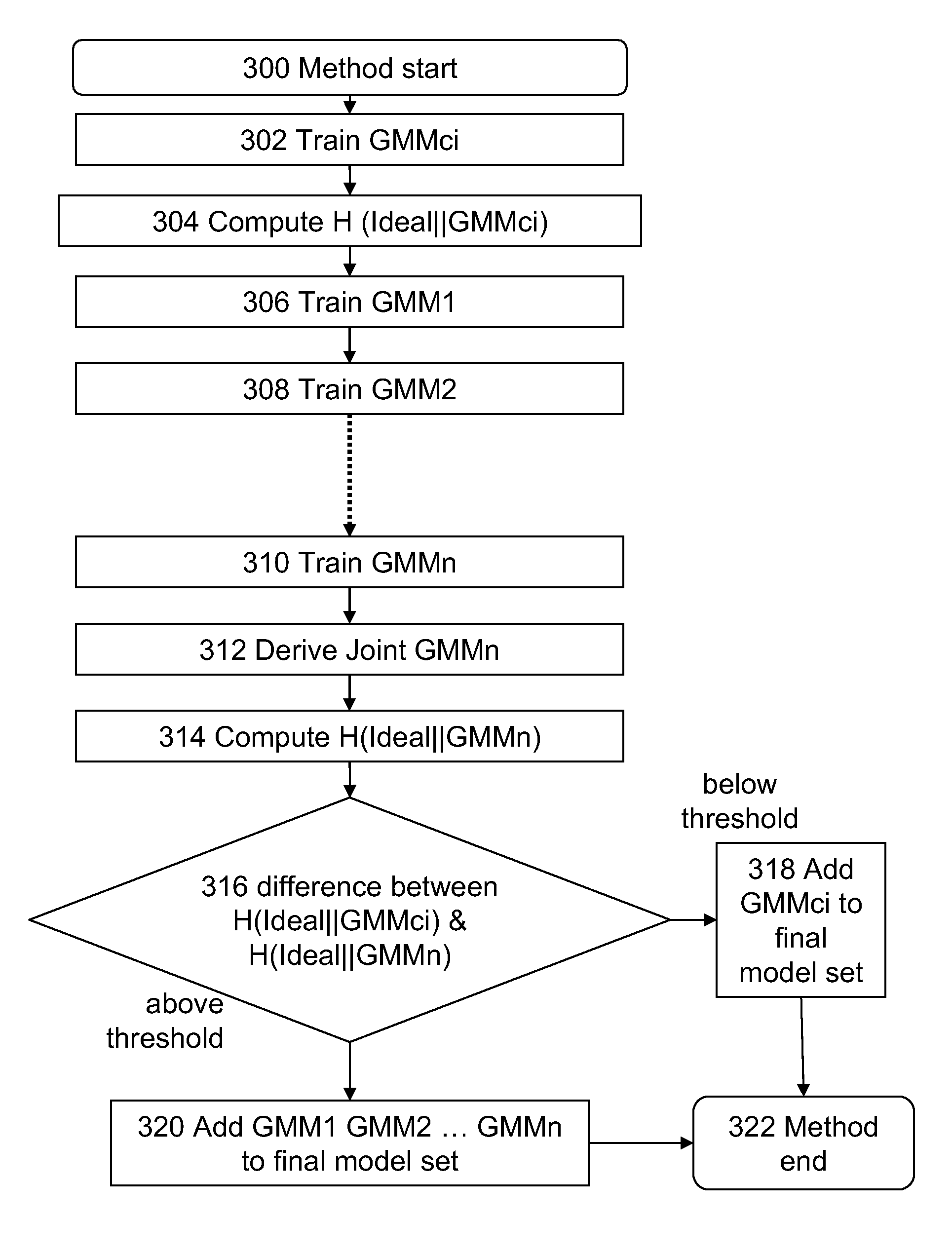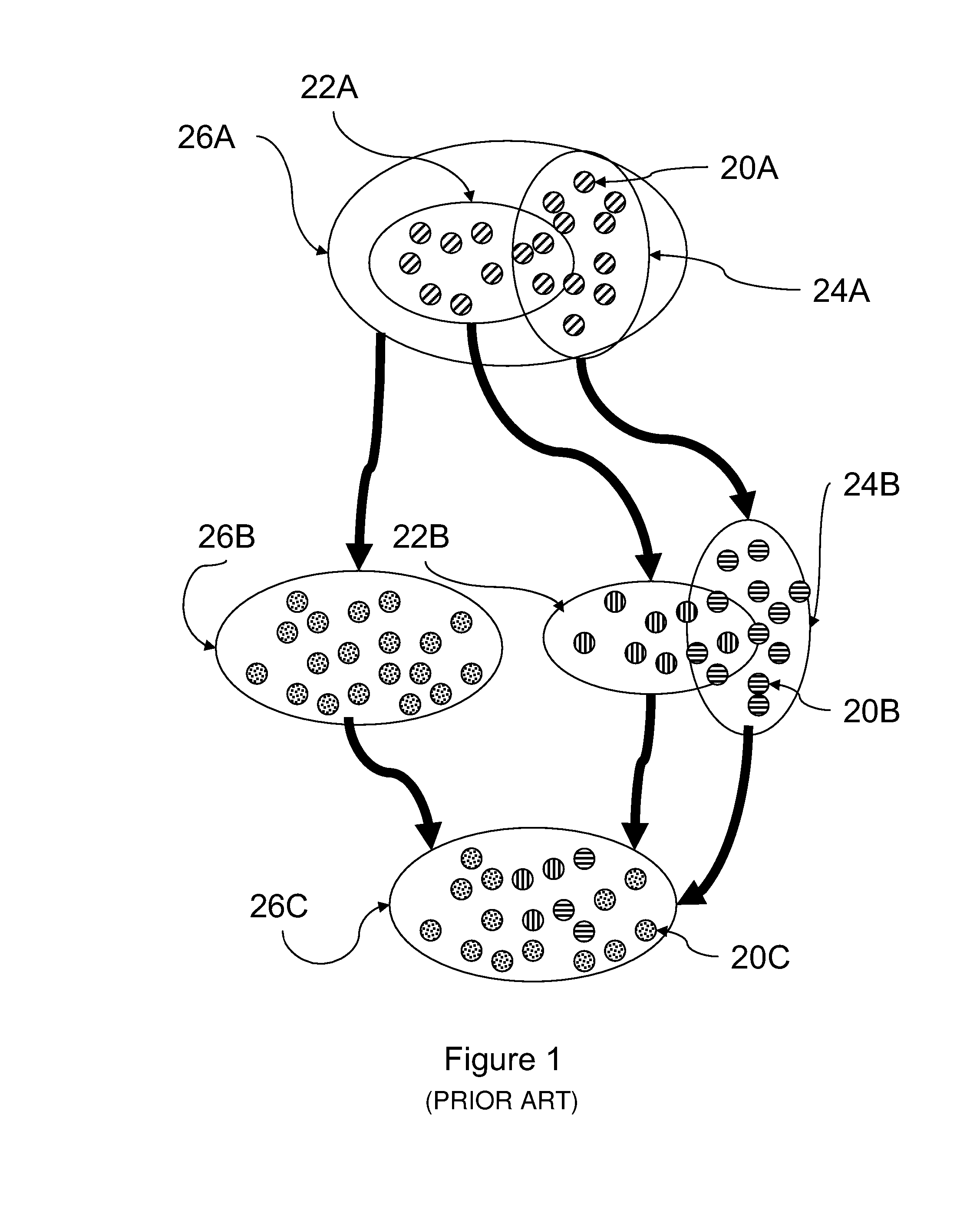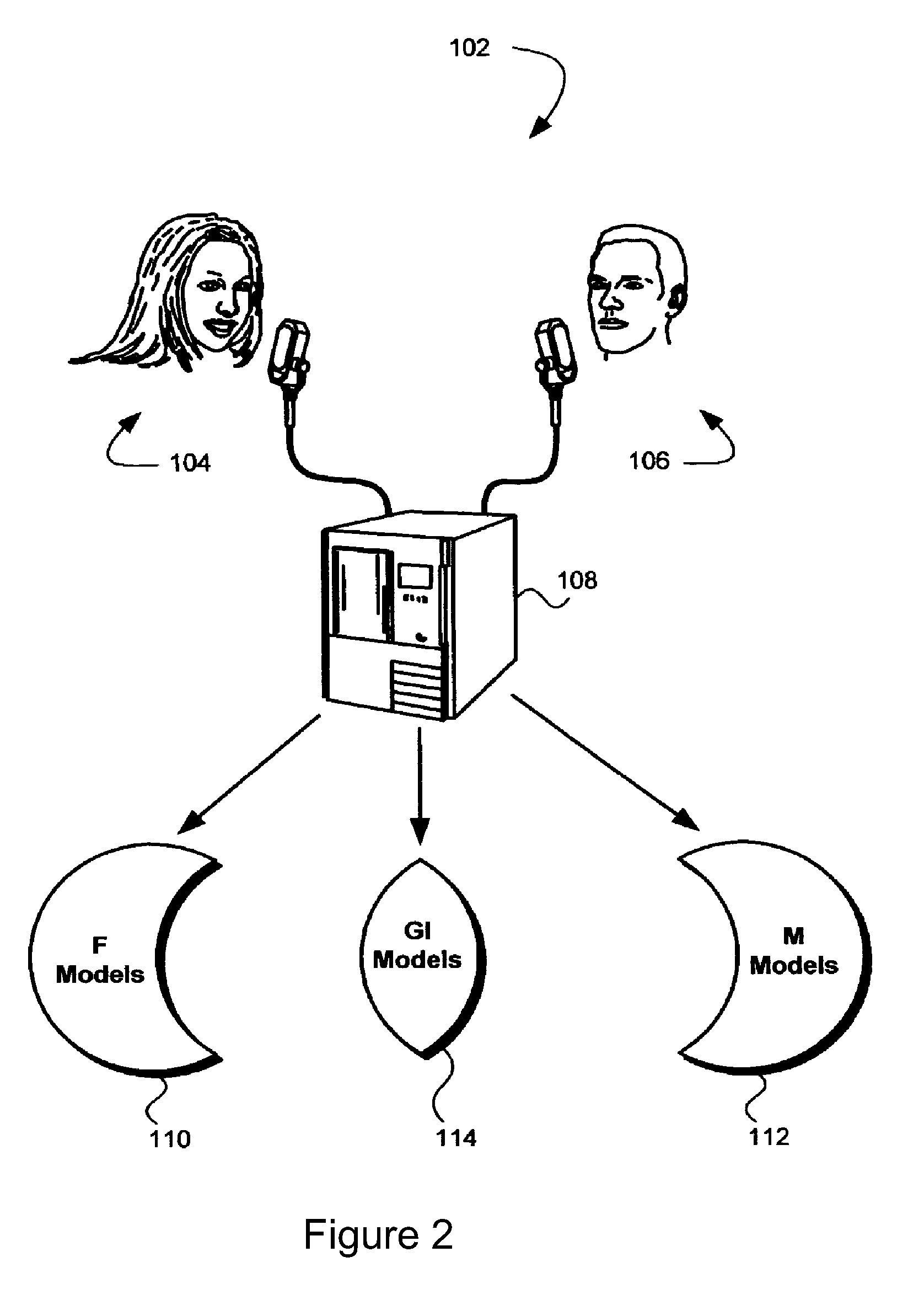Data modeling of class independent recognition models
a data model and class technology, applied in the field of data models, can solve the problems of recognition accuracy, replacement, and general requirement of computing power and resources to be practical in many real-world applications, and achieve the effect of precise determination
- Summary
- Abstract
- Description
- Claims
- Application Information
AI Technical Summary
Benefits of technology
Problems solved by technology
Method used
Image
Examples
Embodiment Construction
[0020]The following description details how the present invention is employed to provide two embodiments of cross entropy difference computation for effective class-independent model replacement in speech and / or voice recognition. Other applications of the present invention utilizing the general principles set forth herein are also contemplated. Thus, the present invention should not be considered limited to the configurations shown and discussed herein. Furthermore, the invention is not limited to speech recognition but can be applied to any recognition data including: finger print recognition data; handwriting recognition data; genetic recognition data and face recognition data.
[0021]In FIG. 2, an exemplary model creation system 102 is shown. The system makes use of training data to derive trained allophone models.
[0022]The system 102 includes two allophone classes: female training data class 104 (represented by a female head) and male training data class 106 (represented by a mal...
PUM
 Login to View More
Login to View More Abstract
Description
Claims
Application Information
 Login to View More
Login to View More - R&D
- Intellectual Property
- Life Sciences
- Materials
- Tech Scout
- Unparalleled Data Quality
- Higher Quality Content
- 60% Fewer Hallucinations
Browse by: Latest US Patents, China's latest patents, Technical Efficacy Thesaurus, Application Domain, Technology Topic, Popular Technical Reports.
© 2025 PatSnap. All rights reserved.Legal|Privacy policy|Modern Slavery Act Transparency Statement|Sitemap|About US| Contact US: help@patsnap.com



